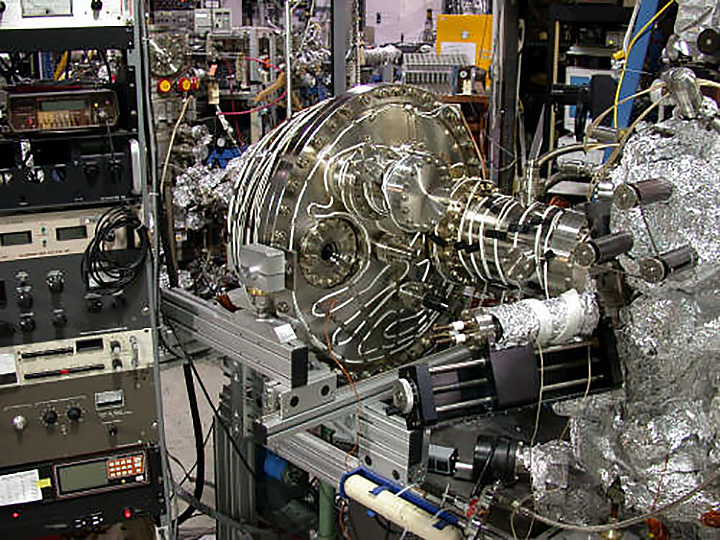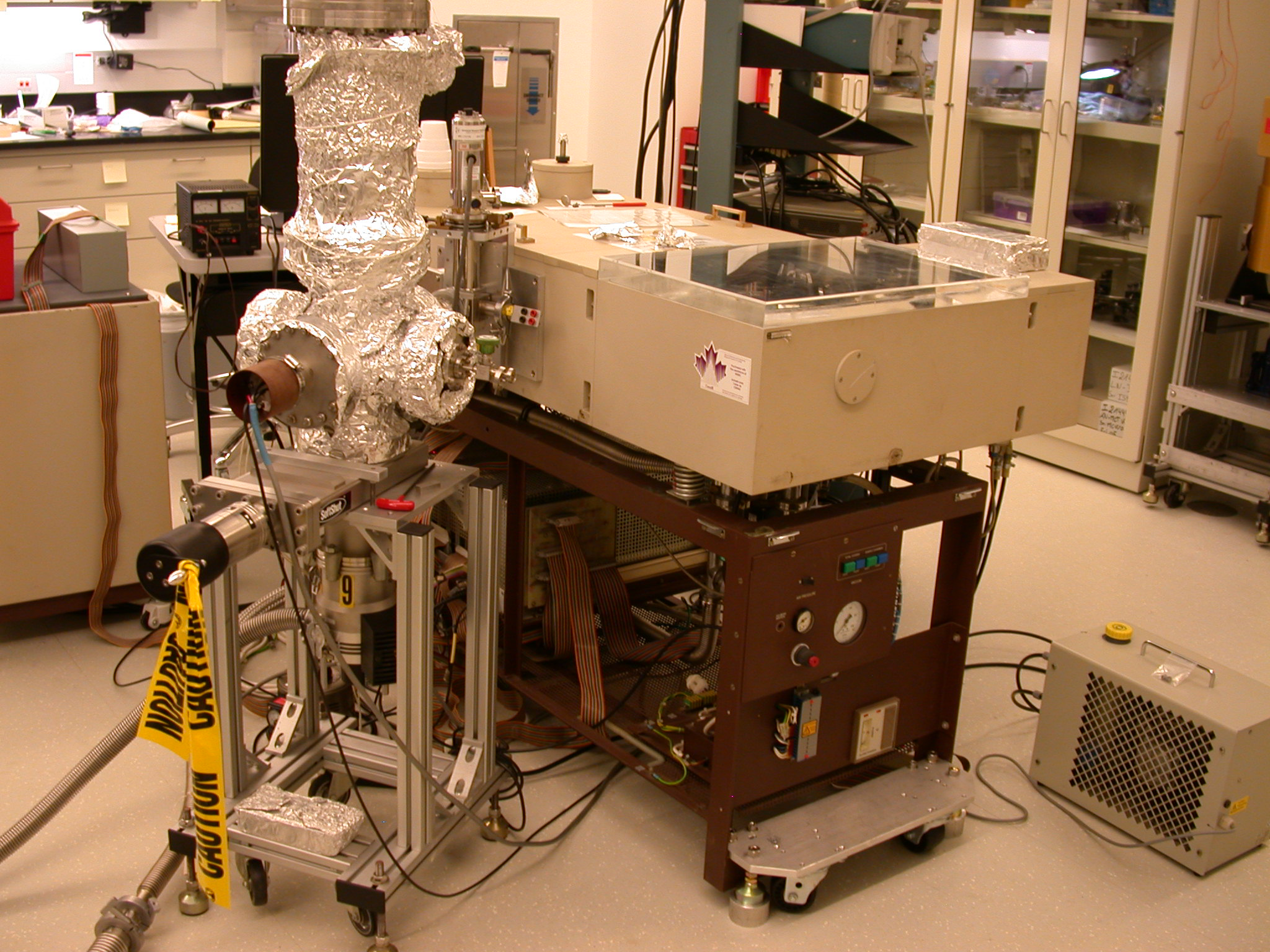Electron Spectroscopy Group
Facilities
The electron spectroscopy group conducts research in two main areas, Fourier transform infrared (FTIR) spectroscopy, and angle resolved photoemission spectroscopy (ARPES).
ARPES
In the past the ARPES program in the Electron Spectroscopy FWP was primarily carried out at the NSLS. The latter was closed down in September 2014. In the future the higher energy ARPES experiments will be carried out through the General User program at the NSLS II facility. It is anticipated that access to the latter will become available by the beginning of FY2018. Experiments will be conducted at the new Electron Spectro-Microscopy (ESM) beamline which provides light in the range 15-1500 eV focused into a 1 micron spot which will allow studies on much smaller length scales than have been available in the past. The beamline is equipped with a Scienta DA30 with 2D mini-Mott spin polarimeter, the latter allowing spin polarization studies. The actual light source consists of two in-line elliptically polarized undulators spanning

OASIS
The OASIS ARPES module has been built as an integral part of OASIS facility for ARPES studies of MBE grown films and heterostructures synthesized in-situ at the facility. It consists of several custom-made sample-preparation chambers and the transfer system for the sample exchange, an MBE chamber for growth of TIs and other non-oxide films and the main ARPES chamber. The latter includes the commercial Scienta R4000-WAL Electron Spectrometer, VUV5k photon source and a conventional low-T cryostat with a set of linear (x,y,z) and rotational (q) stages. The R4000 spectometer is a state of the art electron analyzer with a wide acceptance angle (~30°), allowing simultaneous detection of a large cut in the 2-dimensional Brillouin zone with ~0.1° precision. The energy resolution is of the order of 1 meV, sufficient to resolve spectral features responsible for very low energy/temperature phenomena that we propose to study. The operating kinetic energy range allows for a wide variety of possible photon sources that could be used for the excitation, including low-energy lasers. The VUV5k is a table-top UV-photon source, perfectly suited for the ARPES studies within the OASIS project. The energy resolution is of the order of 1 meV, comparable to that of the electron analyzer. Its relatively small spot size (~0.3 mm) will allow combinatorial analysis of a studied compound in a broad range of continuously varying compositions on a single film. The non-oxide MBE growth chamber will serve for synthesis of materials and heterostructures whose growth conditions are incompatible with the oxide-MBE module: iron-based superconductors, TIs, TCIs, TM chalcogenides, etc. and will enable studies of these materials in both SI-STM and ARPES modules. The chamber will have 3-4 easily replaceable sources, a substrate manipulator with a heater and a thickness monitor and will be inside the path of the OASIS’ global transfer system.
Ultrafast laser lab (ULL)
The ultrafast laser lab (ULL) has been established in the ISB over the past two years. The light sources available in the lab are split between laser and lamp sources. The laser sources include two Coherent Mira 900 (P and F models, respectively) Ti:Sapphire oscillators operating at 76 MHz repetition rate and a Coherent RegA 9000 regenerative amplifier operable at rep rates between 100 kHz and 300 kHz. The Mira 900-P is equipped with its own 10 W pump laser (Coherent Verdi G-10), producing pulses of 1-3 picsecond duration for high resolution ARPES, and the Synchrolock module allowing its pulse stream to be synchronized in phase and frequency to external clock signals. The 900-F produces pulses of ~100 fs duration and can be used on its own or with a stretcher-compressor module to seed the RegA for the production of low rep rate, high power pulses useful for non-equilibrium, two photon photoemission experiments. The RegA is also currently paired with a Coherent Optical Parametric Amplifier (OPA) module used to produce harmonics of the RegA output. The Mira-F/RegA combination is pumped by a 18 W Coherent Verdi V-18 laser. Both Miras and the RegA produce tunable laser radiation centered at 1.5 eV.
The Mira-P system is currently paired with a set harmonic generators allowing it to reach the fourth harmonic (6 eV) useful for high resolution laser-based ARPES experiments. The femtosecond pulses used in two-photon photoemission experiments will be frequency doubled and quadrupled to produce a range of energies. These light sources are focussed into a 10 microns spot to excite photoelectrons from the sample mounted in the experimental chamber, which is equipped with a Scienta 2002 analyzer that was moved into the ULL after the NSLS was decommissioned. In addition to the laser sources a laser-driven plasma lamp paired
Infrared Spectroscopy
The facilities for optical spectroscopy currently consist of a Bruker IFS 113v Fourier transform infrared (FTIR) spectrometer (shown below) and a Bruker Vertex 80v FTIR spectrometer; both of these instruments are vacuum benches. The Bruker 113v is a Genzel-type interferometer that is optimized for the far-infrared and THz regions (~1 meV to 1 eV). One of the primary advantages of this bench is that the light is focused at the beamsplitter, unlike a conventional Michelson interferometer where it is collimated; as a result the beamsplitters in the 113v are quite small (the working surface is typically 1 cm2) and several may be placed on a wheel inside spectrometer allowing them to be changed while the instrument is under vacuum. This optical bench also represents the last generation of spectrometer in which laser interferometer is not integrated into the beamsplitter, allowing us to build and test our own beamsplitters.

A reflectance unit has been custom-designed for this optical bench allowing a compact flow cryostat to attach directly to the spectrometer. An optical window separates the rough instrument vacuum from the high vacuum maintained in the cryostat. Coaxial transfer lines allow a range of temperatures from ~6 to over 400 K to be examined.
The Vertex 80v is a modern FTIR spectrometer that is a modified Michelson design with a dynamically stabilized scanner, allowing interferometry from about several meV to over 5 eV. A laser driven light source is being evaluated as an ultraviolet source to replace the current deuterium lamp. A reflectance unit using a redundant aperture has been designed for this bench; the configuration of the cryostat is similar to that used with the 113v.




